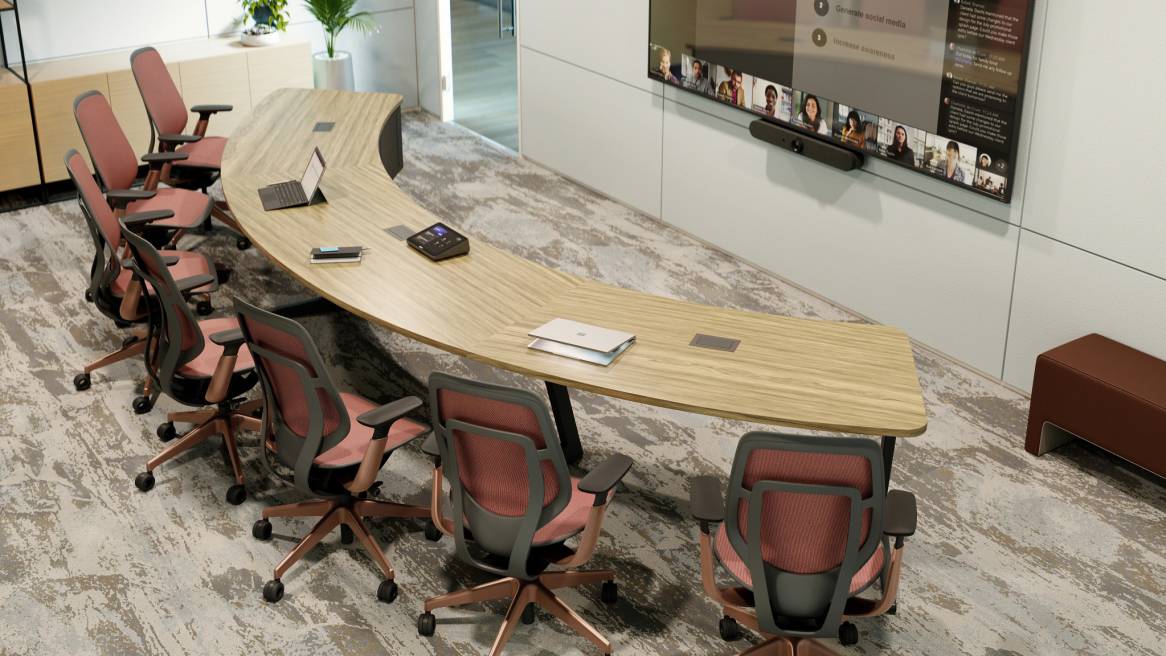Introducing Ocular. Designed for Hybrid.
A unique curved shape creates a more inclusive and collaborative hybrid meeting for people on both sides of the camera.
Collaboration is one of the top reasons people want to come into the office. But most meetings today will include at least one, or several, remote participants. And too often, teams are trying to collaborate in spaces designed before hybrid work went mainstream.
In a traditional conference room designed with mostly in-person attendees in mind, you are likely to find a long rectangular table with a monitor on the short wall. People in the room have to turn to see who is on screen and end up looking at the back of each other’s heads. They often have to lean in to be seen by their remote colleagues. A big room of people can be especially challenging for a remote participant, making it difficult to read facial expressions or body language. Add to that, poor video call lighting, less-than-ideal acoustics and microphones that don’t reach the entire room, and you end up with a frustrating collaboration experience.
With hybrid work here to stay, designers are rethinking traditional conference room designs to improve these spaces for hybrid collaboration.
MEET OCULAR
Ocular™ is a table designed specifically for hybrid collaboration. Its unique curved shape creates a more inclusive and collaborative experience, allowing everyone in the room to see one another and encouraging eye-to-eye contact between in-person and remote colleagues.
The table design intentionally shifts the orientation of the room from portrait (facing the short wall) to landscape (facing the long wall), now people on both sides of the camera can see and be seen. Everyone in the room is equidistant to the camera. Remote participants can better see facial expressions and body language.
Ocular was co-designed and developed by Steelcase and Microsoft for a Signature Microsoft Teams Room.
“Announced in October, the Signature Teams Room was designed to create an environment where both in-room and remote participants feel more engaged with more inclusive and natural interactions,” says Greg Baribault, Head of Product for Microsoft Teams Rooms. “We achieve this by combining intelligent devices, Front Row in Teams Rooms, custom-designed furniture, and optimized room configurations. The Ocular table offered by Steelcase is ideal for a Signature Teams Room and is a prime example of the innovation required as companies adapt to the new patterns of work.”
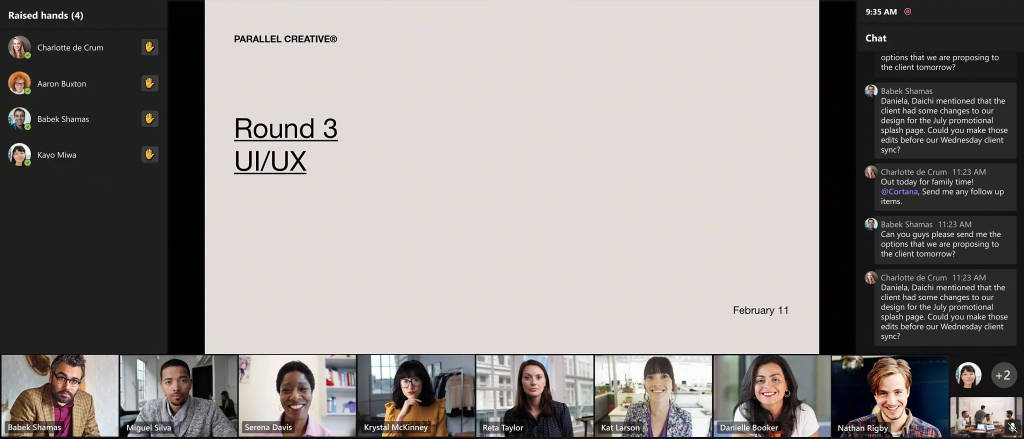
Front Row is a meeting layout for Microsoft Teams Rooms, designed to enhance hybrid meetings and foster a greater sense of connection and collaboration for remote attendees and in-room meeting participants. It moves the video gallery to the bottom of the screen while keeping important meeting content, like the chat and raised hands, persistent and visible.
Ocular is part of a new meeting room experience designed for an informative or evaluative meeting — teams reviewing progress or leadership weighing in on a project, for example.
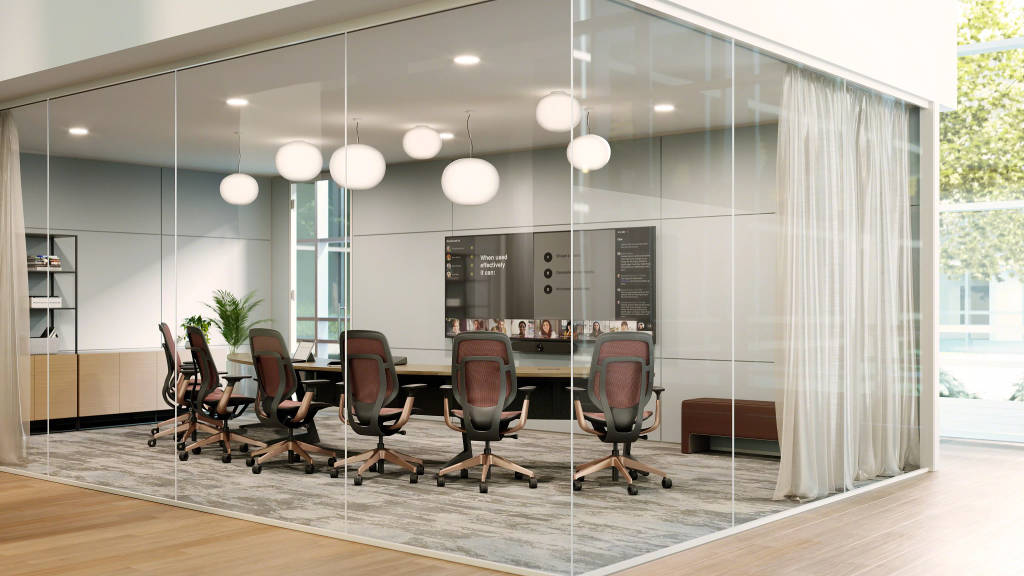
NEW HYBRID SHAPES AND LAYOUTS
Designers and engineers set out to improve inclusion, engagement and ease for people using the space and those joining remotely.
“Old office room layouts are biased toward in-room collaboration, creating obstructed views. Ocular takes into consideration advances in collaboration software. Its curve places people in the room equidistant to the camera which allows for clear visibility and greater equity for in-room and remote teammates,” says Cherie Johnson, Steelcase global design director.
The curvature of the table ensures that every in-room participant can also see one another in addition to being at eye level with remote colleagues. That eye-to-eye view creates more equity between those in-room and remote.
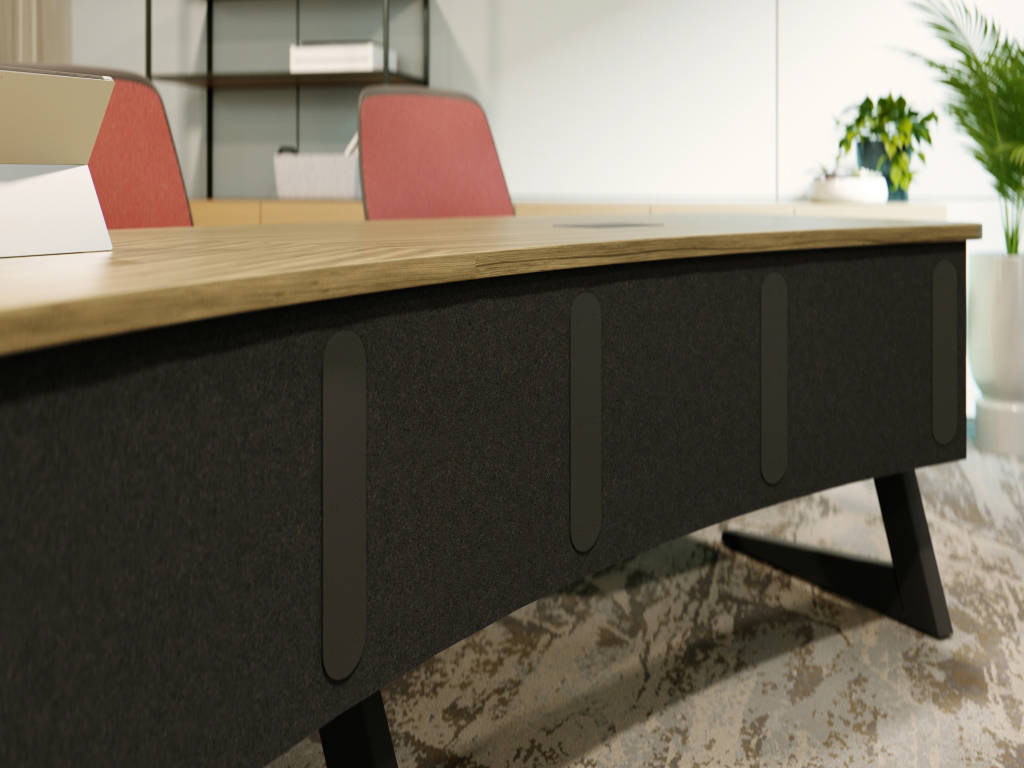
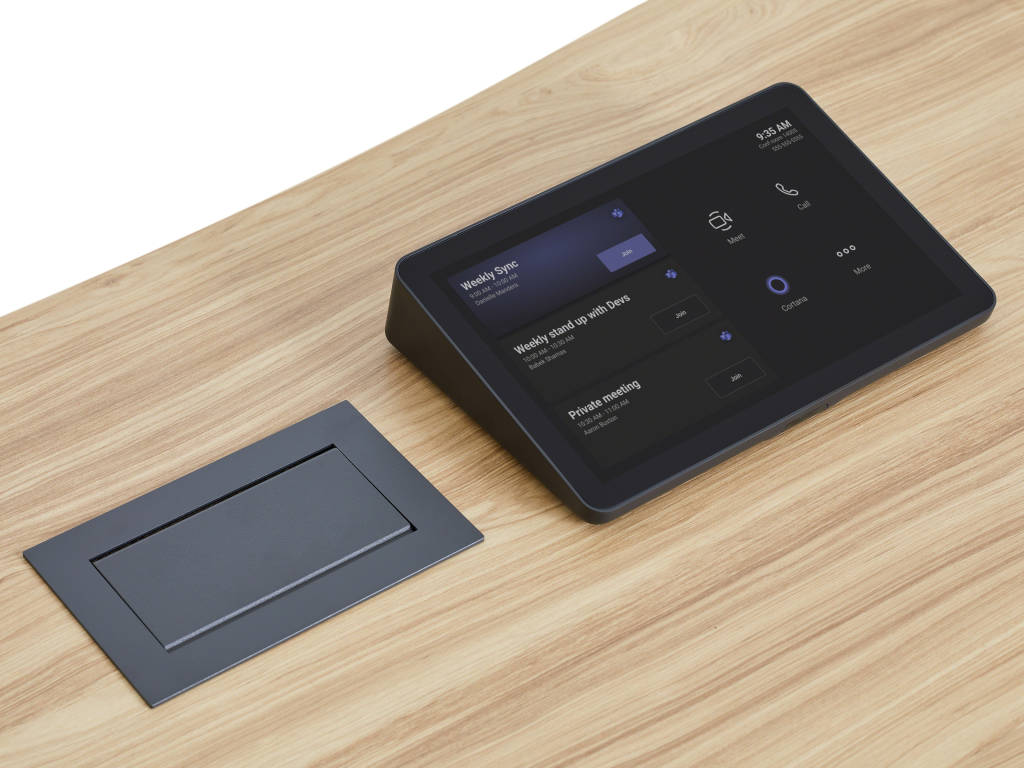
Ocular’s curve is just one example of how shapes are shifting to accommodate hybrid work.
“The shape of the table helps position the person in the room for the best video experience,” says Mary Elaine Roush, Steelcase global design principal. “Rectangles stack people on video and you can’t see everyone easily. Thoughtfully designed table shapes specifically for video position people in the right places to have the best sightlines.” Spaces have to be designed for the camera as much as the people that are in them.
Explore Ocular
Learn more about how Ocular can help create better hybrid collaboration spaces.
Steelcase continues to collaborate with industry-leading technology partners like Microsoft and Logitech to integrate tech into the workplace earlier in the design process. By working together, we can leverage the latest technology enhancements to create spaces that make hybrid work better for everyone.

